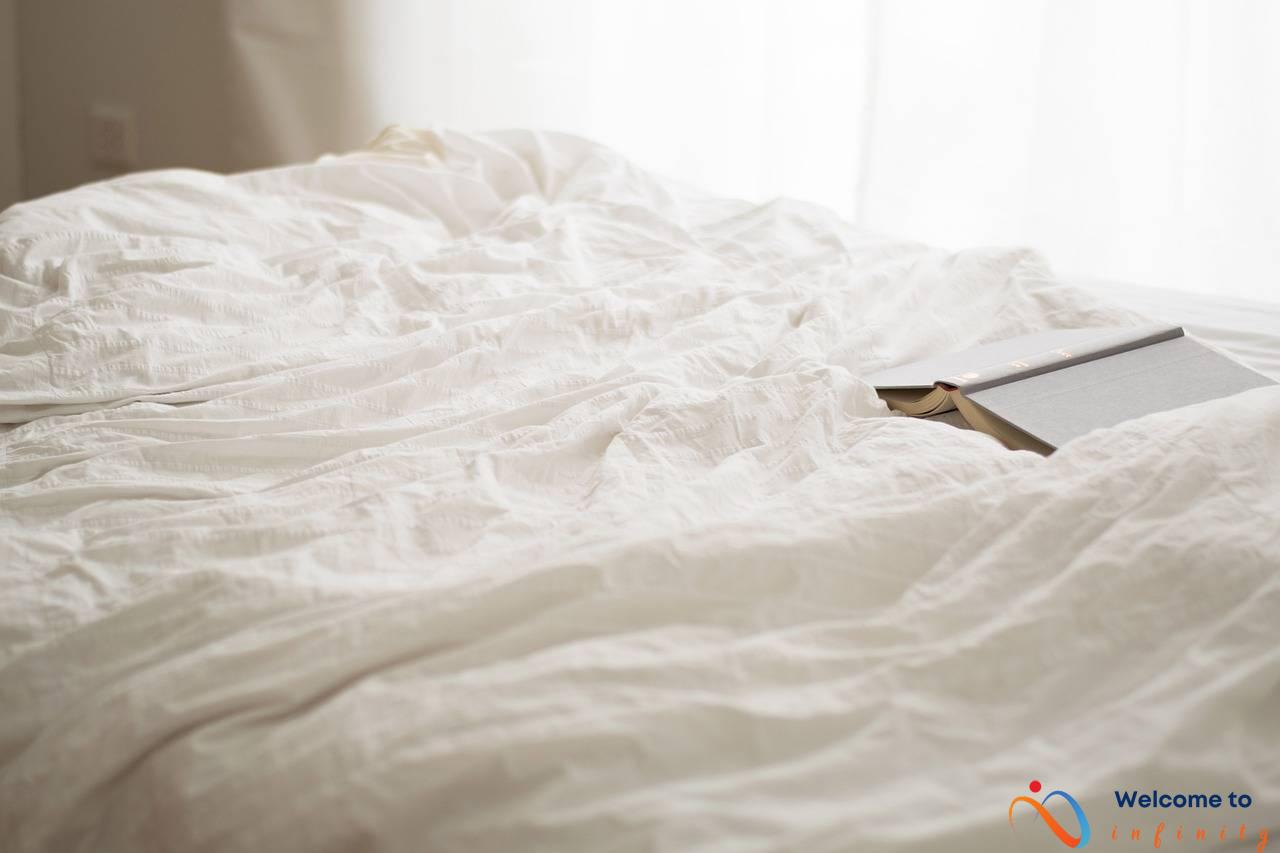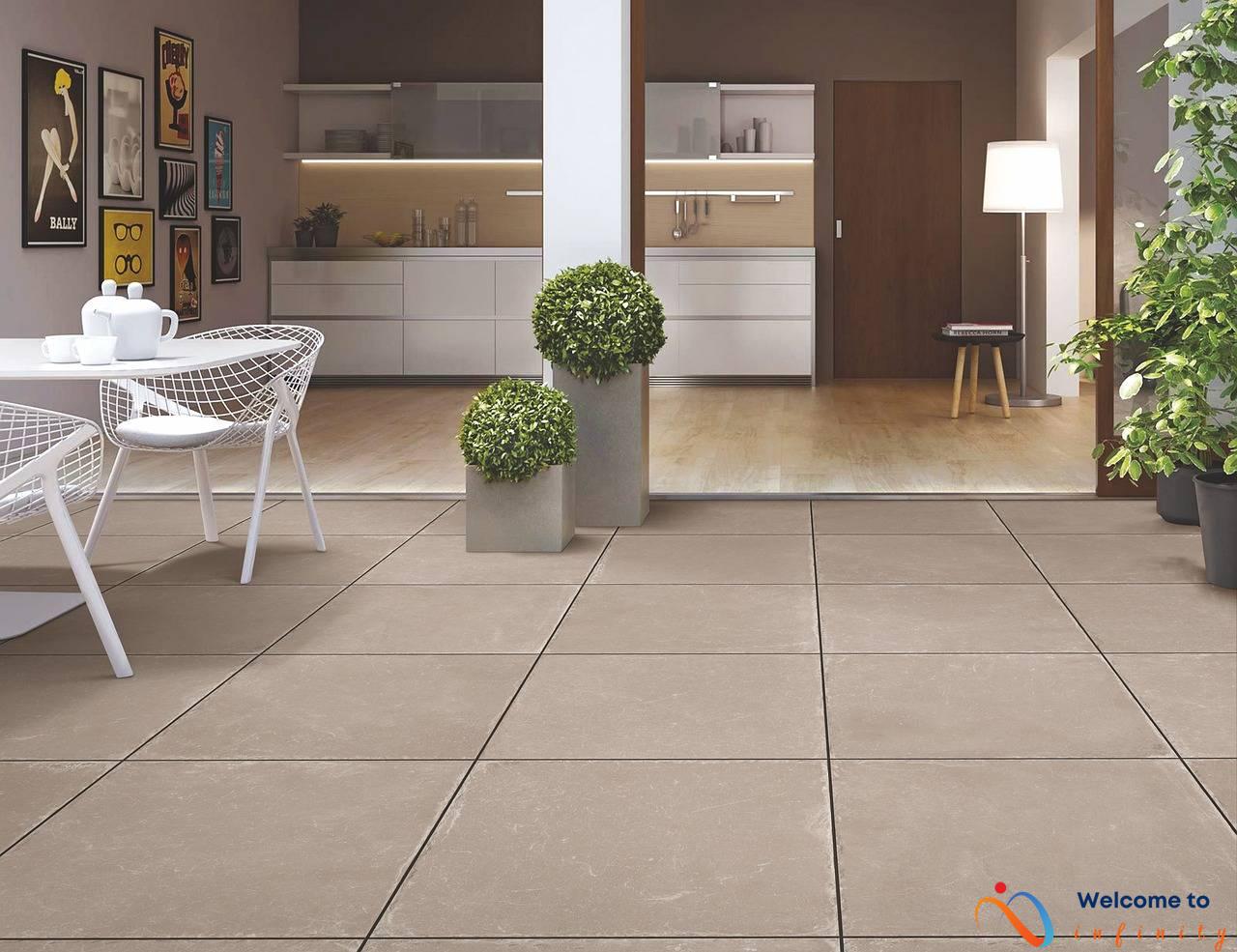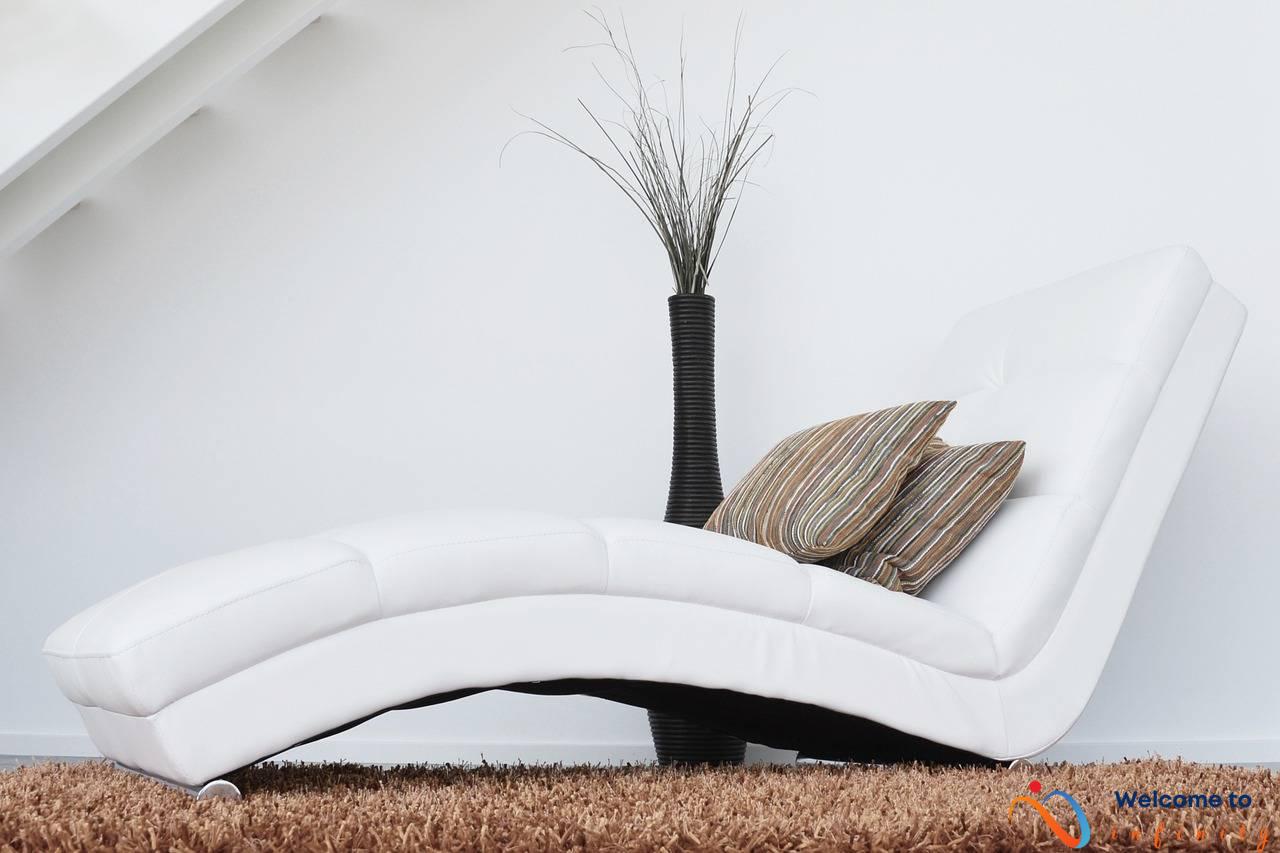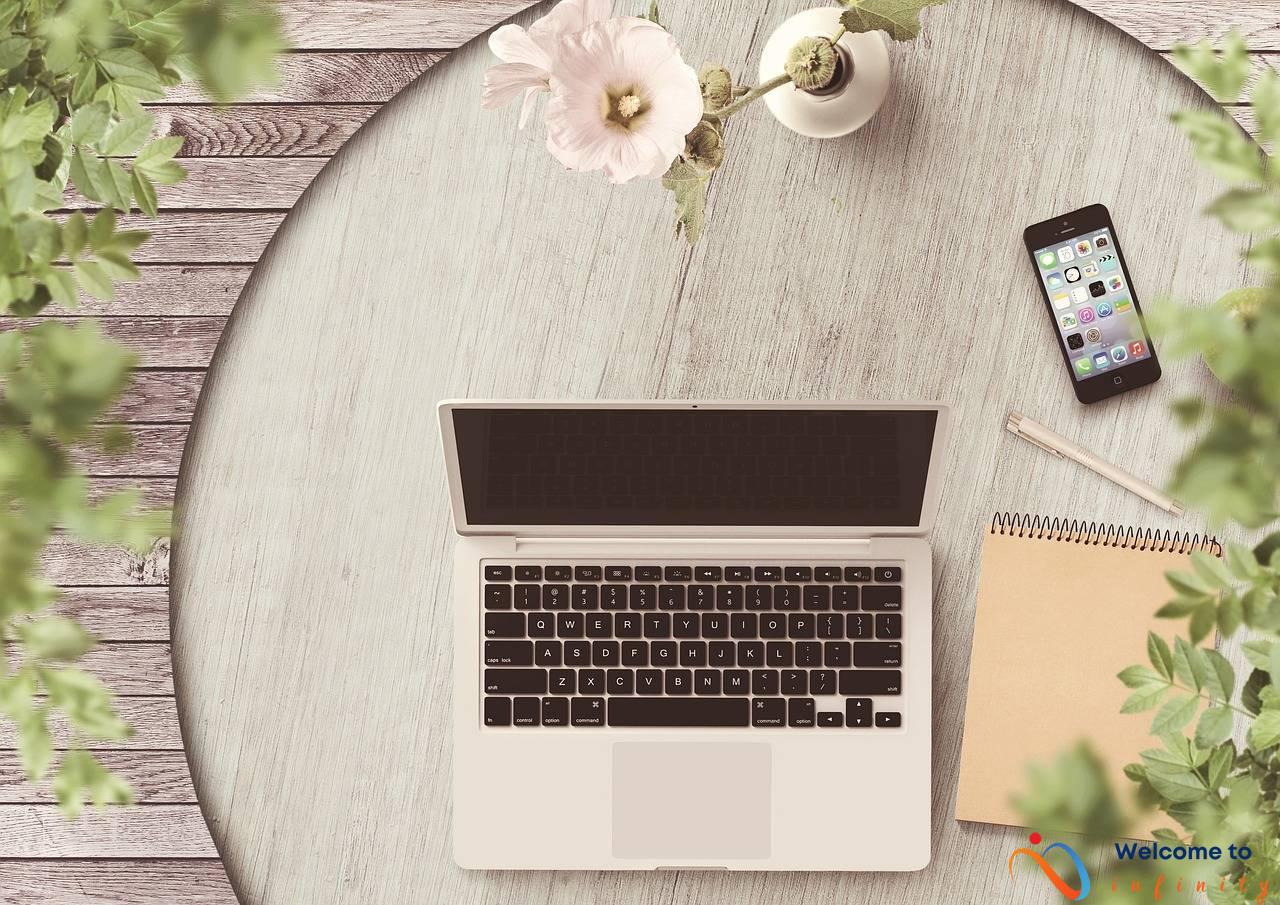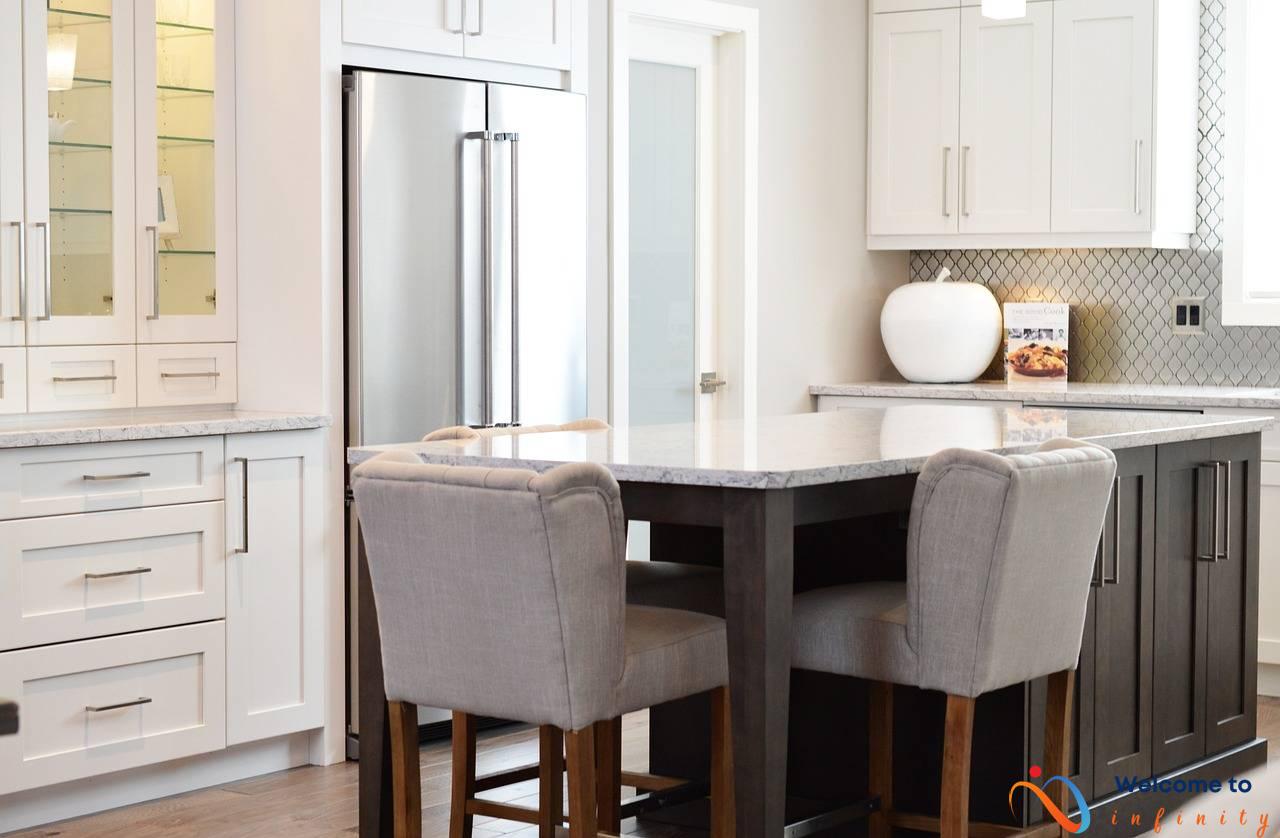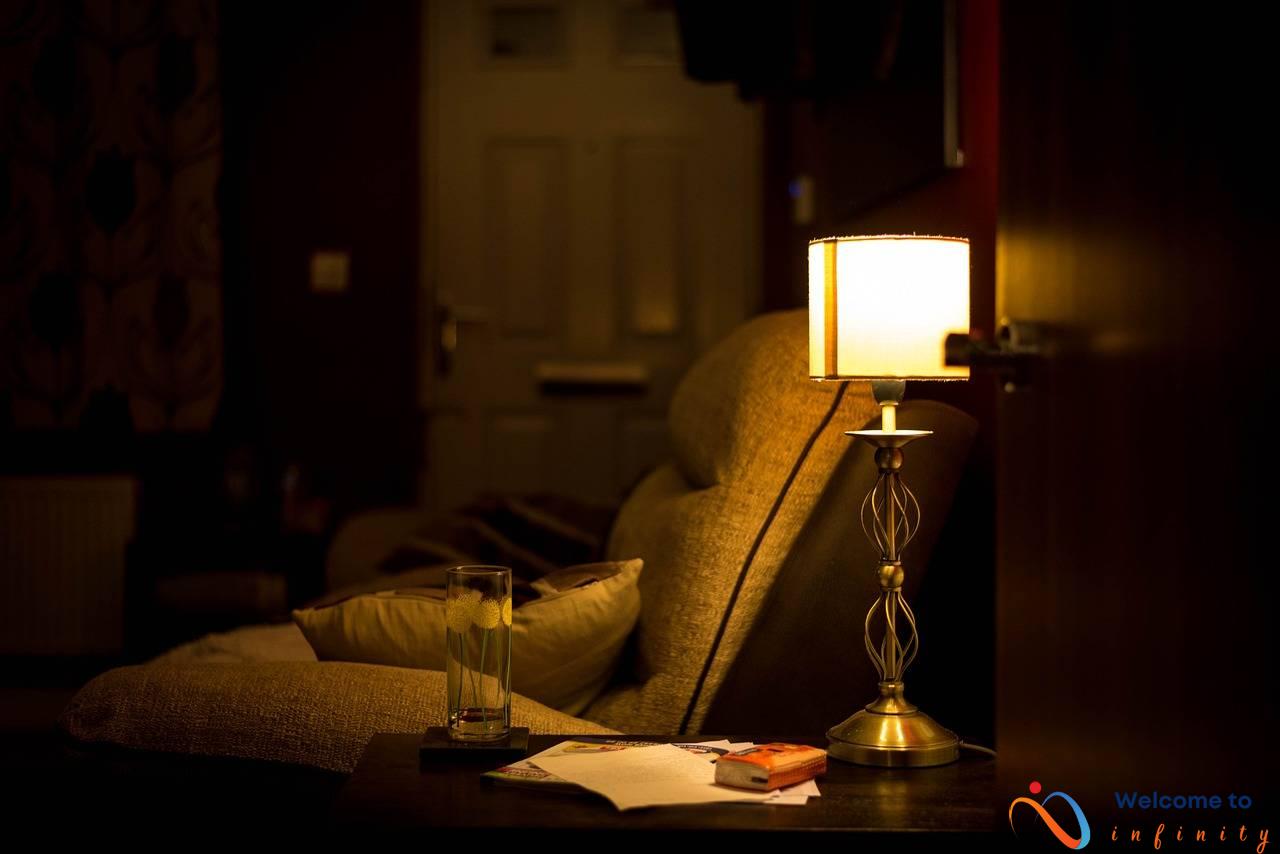If you're working from home, having a well-organized workspace can help you stay focused and increase your productivity. However, organizing a home office can be a daunting task. That's why we've compiled a list of minimalist hacks to help you create a clean and productive workspace.
The first step to organizing your home office is decluttering. Get rid of any unnecessary items that take up valuable space and create a minimalist aesthetic. A clutter-free workspace promotes a clear mind and can help you focus better.
Once you've decluttered your workspace, it's time to set up your desk for maximum efficiency and comfort. Invest in ergonomic accessories, such as an adjustable chair and keyboard, to minimize strain on your body. You can also consider investing in an adjustable standing desk to improve circulation and posture.
Managing wires and cables is another essential aspect of keeping your workspace organized. Explore various wire management solutions, including desk grommets, cable clips, and cable organizers. These solutions can minimize distractions and improve aesthetics.
Effective storage solutions are also crucial in keeping your workspace organized and free of clutter. Invest in storage boxes, shelving units, and filing cabinets to store your office supplies and paperwork. Clear labels on these storage systems help you find items quickly, while also promoting a minimalist aesthetic.
Finally, creating a minimalist aesthetic is essential in promoting focus and productivity. Find sustainable office supplies, such as eco-friendly pens and paper, to reduce your environmental footprint. Personalize your workspace with budget-friendly DIY decor ideas, such as framed posters or personalized photo displays. By creating a minimalistic workspace, you can feel more relaxed and inspired while you work.
Decluttering Tips
Do you find yourself distracted by piles of paperwork, trinkets, and other miscellanea crammed on your desk, and struggle to focus on your work? Consider decluttering your workspace to create a clean and productive work environment.
Start by identifying things that you don't need or use, and dispose of them. To make this process easier, divide items into categories, such as essentials, non-essentials, and items that can be stored elsewhere. Essential items are those that you use regularly, such as your computer, phone, and pen and paper. Non-essential items include things like knick-knacks, paperweights, and out-of-date reference materials, while items that can be stored elsewhere could be archived documents or seldom-used equipment.
If you're struggling to decide what to keep and what to toss, ask yourself whether an item is necessary for your work and if it supports your goals for the day or week. Items that don't have a clear purpose should be discarded or placed elsewhere.
Another useful decluttering technique is to create storage systems to keep your workspace tidy. You can use drawers, shelves, or boxes to store papers and other supplies. Keep things within arm's reach, so you don't have to go hunting for them when you need them.
By decluttering your workspace, you'll create a clean slate that will help you stay focused, reduce stress and improve your productivity. Use these decluttering tips as a starting point to create a cleaner and more efficient workspace!
Functional Desk Setup
Creating a functional desk setup is essential for staying productive and comfortable while working from home. Here are some tips for maximizing the efficiency and comfort of your workspace:
- Choose an appropriate desk size: Make sure the desk is large enough to accommodate your computer, keyboard, mouse, and any other necessary items.
- Position your desk strategically: Place your desk in a location that receives natural light and is free from distractions.
- Invest in a comfortable chair: A good office chair with lumbar support can help prevent back pain and improve posture.
| Bonus Tip: | Use a monitor stand to raise your computer to eye level, reducing strain on your neck and eyes. |
|---|
By implementing these tips, you can create a workspace that promotes productivity and comfort, enabling you to work more efficiently and maintain focus throughout the day.
Ergonomic Accessories
Ergonomic accessories are essential to keep your posture and comfort level in check while working for long hours at your home office. Here are a few ergonomic accessories that can help reduce strain on your body:
- Ergonomic keyboard and mouse: These accessories offer a more natural positioning of your hands, reducing the risk of developing carpal tunnel syndrome and other repetitive strain injuries.
- Laptop stand: This accessory elevates your laptop to eye level, preventing neck and back pain caused by hunching over the screen.
- Footrest: Keeping your feet flat on the ground while sitting in a chair for an extended period can cause discomfort, fatigue, and lower back pain. A footrest can help you maintain proper posture and alleviate these issues.
Investing in ergonomic accessories will provide long-term health benefits. Keep in mind that different ergonomic accessories work for different people. Therefore, it is essential to select the right accessory that meets your specific requirements.
Adjustable Standing Desk
An adjustable standing desk is a great investment for anyone who spends a lot of time sitting at a desk. Sitting for prolonged periods can cause poor circulation, muscle stiffness, and other health problems. An adjustable standing desk allows you to alternate between sitting and standing throughout the day, which can help improve circulation and posture.
Standing desks come in various styles and sizes, so you can choose one that best fits your needs. Some models are adjustable with a crank or electric motor, while others have manual adjustments. You can even find standing desk converters that sit on top of your existing desk, giving you the best of both worlds.
Another benefit of an adjustable standing desk is that it can help reduce back pain. When you stand, your core muscles are engaged, and your spine maintains its natural alignment. Sitting, on the other hand, puts more stress on your lower back and can cause strain on your neck and shoulders.
To make your adjustable standing desk even more comfortable, consider adding an anti-fatigue mat. These mats provide a cushioned surface for your feet and can help reduce foot, leg, and back fatigue. You can also add a footrest or a balance board to engage your muscles even more.
If you're new to standing at a desk, start slowly. Alternate between sitting and standing every 30 minutes or so, gradually increasing the amount of time you spend standing. You may also want to invest in a good pair of anti-fatigue shoes, which can provide additional support and cushioning.
In conclusion, an adjustable standing desk is a valuable investment for anyone who works at a desk. It can help improve circulation, posture, and overall comfort, making your workday more productive and enjoyable.
Wire Management Solutions
In today's world, technology is an integral part of our daily lives, and as a result, our workspaces are filled with various devices, which means lots of wires and cables. These wires create a messy and rather unappealing look, which can often be a source of distraction and negatively impact productivity. Fortunately, there are several solutions to help manage wires and cables and keep them organized and out of sight.
- Cable Ties and Clips: Cable ties are a simple solution for bundling multiple cables together. Available in different sizes and colors, cable ties can be purchased in bulk for a cost-effective solution. Alternatively, cable clips can be attached along the edge of a desk to hold cables neatly in place.
- Cable Sleeves and Spiral Wraps: Cable sleeves are an excellent solution for bundling cables together and keeping them hidden from view. Spiral wraps are ideal for wrapping around a single cable for a neat and tidy appearance.
- Cord Covers: For those who need to run cables across the floor, cord covers offer a solution to keep them organized and safe. Cord covers come in different sizes and materials to meet specific needs and match decor.
By adopting one or more of these cable management solutions, you can create a cleaner, more organized workspace and feel much more productive. Not only will it be easier to focus, but it will also look visually pleasing and provide a sense of calm, resulting in increased creativity and motivation.
Effective Storage Solutions
If you're constantly battling clutter in your home office, don't despair! There are plenty of effective storage solutions that can help keep your workspace organized and free of clutter. Here are a few ideas to get you started:
- Shelving Units: Shelving units are a great way to keep your items organized in a vertical manner. They come in a variety of sizes and materials, so you can choose one that fits your space and style perfectly.
- Filing Cabinets: If you have a lot of paperwork to deal with, a filing cabinet is a must-have. Look for one with plenty of drawers and folders to keep everything in order.
- Desk Organizers: Desk organizers are a simple and affordable way to keep your desk free of clutter. They come in different shapes and sizes, so you can choose one that fits your specific needs.
- Rolling Carts: If you need to move your office around frequently, a rolling cart can be a lifesaver. You can use it to store your supplies and move it around as needed.
It's important to remember that effective storage solutions don't have to be expensive or complicated. Just taking the time to assess your needs and finding the right storage solutions can make a big difference in keeping your workspace organized and clutter-free.
Decor and Aesthetics
Creating a workspace that is not only functional but also aesthetically pleasing helps promote focus and productivity. One way to achieve this is by embracing a minimalist aesthetic. Here are some tips on how to create a minimalist workspace that reflects your personal taste:
- Choose a neutral color palette: Opt for simple colors like white, black, grey, or beige. This creates a calming atmosphere and makes it easier to spot clutter that needs to be removed.
- Eliminate unnecessary decor: Minimalism means no clutter, so consider removing unnecessary knick-knacks that don't serve a purpose.
- Invest in quality furniture: Minimalism doesn't mean you have to sacrifice quality or comfort. Choose furniture that is functional, comfortable, and durable.
Embracing sustainable office supplies is also a great way to promote a minimalist aesthetic while making a positive impact on the environment. Consider using refillable pens, recycled paper, and soy-based ink.
Lastly, add a personal touch to your workspace with some budget-friendly DIY decor ideas. Create a vision board of your goals, add a plant or two to bring some nature indoors and give your workspace a breath of fresh air, or hang up some inspiring quotes or artwork that motivates you. Remember, a workspace that reflects your personality and taste boosts creativity and productivity.
Sustainable Office Supplies
When it comes to creating an eco-friendly workplace, choosing sustainable office supplies is a vital step. Traditional office supplies often contain harmful chemicals and contribute to environmental pollution. Fortunately, there are plenty of eco-friendly alternatives that are just as effective as their conventional counterparts.
- Biodegradable pens and pencils made from recycled materials are an excellent option for those who frequently use writing instruments. They eliminate the need for disposable plastic pens and help reduce landfill waste.
- Recycled paper is an excellent choice for printing and note-taking, and it is readily available in most stationery stores. Opt for paper that has been made using 100% post-consumer waste, which means it has been recycled from paper that has already been used by consumers.
- Reusable stainless steel water bottles and coffee cups are an excellent way to reduce the number of disposable cups and plastic bottles being thrown away each day. They can be used repeatedly, and most models are easy to clean and maintain.
In addition to these examples, there are plenty of other eco-friendly alternatives available for things like file folders, staplers, and even electronics. When shopping for office supplies, do your research and opt for items made from recycled materials or those that have been manufactured with sustainability in mind. It's a small step, but it can make a big difference in reducing your carbon footprint and promoting a healthy environment for everyone.
DIY Decor Ideas
If you're looking to spruce up your home office without breaking the bank, then DIY decor ideas are the perfect solution. Not only are they budget-friendly, but they also allow you to personalize your workspace to reflect your unique personality and taste. Here are some DIY decor ideas that you can easily incorporate to create a more inviting and inspiring work environment.
- Gallery Wall: Create a gallery wall using pictures of family and friends or inspirational quotes that motivate you. This is an excellent way to add a personal touch to your workspace while also creating a visually appealing focal point.
- Cork Board: Cover a small cork board with colorful fabric and use it to pin important notes and reminders. You can also add some decorative elements such as ribbons or buttons to create a unique look.'
- Repurposed Containers: Transform old containers such as mason jars, cans, or tin boxes into desk organizers. You can paint them in your favorite color or add stickers and labels to make them more fun and functional.
- Wall Hanging: Create a wall hanging using a dowel, yarn, and some decorative beads or feathers. Hang it above your desk for a bohemian touch or create a modern look with geometric shapes.
DIY decor ideas are not only an affordable way to decorate your workspace, but they also allow you to express your creativity and add a personal touch to your home office. So get creative and have some fun while making your workspace a more inviting and inspiring place.'
Productivity Tips
Working from home has its perks, but it can also be challenging to maintain focus and productivity. Here are some tips and tricks to help you stay on track:
One effective way to manage your time is to schedule specific blocks of time for different tasks. For example, you can assign a block of time for checking emails, responding to calls, and completing projects. Set a timer for each block and strive to complete your tasks within the allocated time.
Plan your day by prioritizing your most important tasks and breaking them down into smaller, more manageable steps. This will help you stay on top of your workload and avoid feeling overwhelmed.
- Start your day by identifying the three most important tasks that need your attention
- Break them down into smaller to-do items
- Complete each item before moving on to the next one
It's easy to get lost in work and forget to take breaks, but this can be counterproductive in the long run. Taking regular breaks can help you recharge, refocus, and refresh your mind.
Working from home can be full of distractions, such as pets, family members, or household chores. Try to eliminate as many distractions as possible by dedicating a separate space and scheduling work hours. Also, consider using noise-canceling headphones or playing background music to help you concentrate.
Working alone can be isolating at times, which can affect your motivation and productivity. Stay connected with your colleagues by using video conferencing tools, chat applications, or scheduling virtual coffee breaks.
By implementing these productivity tips and tricks, you can maintain focus, stay on track, and accomplish your tasks while working from home.
Time-Blocking
Managing time effectively is essential for staying productive and achieving goals. One way to accomplish this is through time-blocking. Time-blocking is scheduling chunks of time for specific tasks, allowing you to focus on one task at a time without distractions. Here are some tips on how to use time-blocking to manage your time effectively:
- Set Priorities: Identify which tasks are the most important and schedule them first. This ensures that you focus on your most essential tasks and don't get caught up in less important ones.
- Create a Schedule: Plan your day in advance by creating a schedule that includes time for each task. Use a planner or an online calendar to block off specific hours or half-hours for tasks.
- Eliminate Distractions: During your scheduled time blocks, eliminate any potential distractions like social media, email, or phone notifications. This helps you stay focused and stick to your schedule.
- Be Realistic: When scheduling tasks, be realistic about how long each task will take, and avoid over-scheduling. Give yourself time to take breaks and recharge between tasks.
- Stick to Your Plan: Once you have created your schedule, stick to it as best as you can. Time-blocking is only effective if you follow through with your plan.
Time-blocking can help you take control of your schedule, reduce stress, and improve your productivity. By setting aside designated time for tasks, you can focus on one thing at a time and avoid feeling overwhelmed. Try implementing time-blocking into your daily routine and see how it can improve your workday.
Task Prioritization
One of the most important skills for a productive workday is effective task prioritization. When you have multiple tasks and deadlines to meet, it can be overwhelming to decide where to start. Here are some strategies to help you prioritize your workload:
- Urgency vs. Importance: Determine which tasks are urgent and need to be completed immediately versus those that are important but can wait. Focus on the urgent tasks first and then move on to the important ones.
- Deadline Driven: If you have a deadline looming for a specific task, prioritize it accordingly. Make sure you leave enough time to complete it before the deadline.
- Difficulty Level: Assign a priority to each task based on its level of difficulty. Start with the easier tasks and work your way up to the more challenging ones to build momentum and avoid burnout.
Breaking down tasks into manageable steps can also help with prioritization. Instead of seeing a project as one large task, break it down into smaller tasks and prioritize them accordingly. This approach can help with time management and prevent procrastination.
Remember, effective task prioritization is key to maximizing productivity. By focusing on urgent and important tasks, setting priorities based on deadlines and difficulty, and breaking projects into manageable steps, you can stay on top of your workload and achieve your goals.






